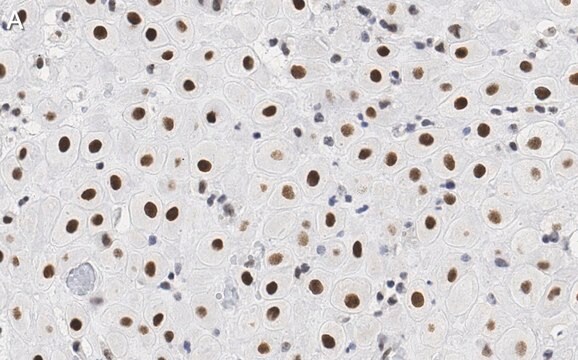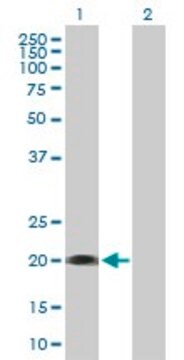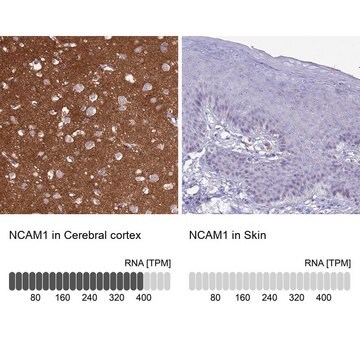Wichtige Dokumente
HPA010025
Anti-SELENOS antibody produced in rabbit

affinity isolated antibody, buffered aqueous glycerol solution
Synonym(e):
Anti-AD-015, Anti-MGC2553, Anti-SBBI8, Anti-SELS, Anti-SEPS1, Anti-VIMP
About This Item
Empfohlene Produkte
Biologische Quelle
rabbit
Qualitätsniveau
Konjugat
unconjugated
Antikörperform
affinity isolated antibody
Antikörper-Produkttyp
primary antibodies
Klon
polyclonal
Form
buffered aqueous glycerol solution
Speziesreaktivität
human
Erweiterte Validierung
RNAi knockdown
Learn more about Antibody Enhanced Validation
Methode(n)
immunoblotting: 0.04-0.4 μg/mL
immunofluorescence: 0.25-2 μg/mL
immunohistochemistry: 1:200-1:500
1 of 4
Dieser Artikel | 267430 | 265608 | 348783 |
|---|---|---|---|
| assay 99.9% trace metals basis | assay ≥99.99% trace metals basis | assay 99.9% trace metals basis | assay 99.9% trace metals basis |
| bp 2212 °C (lit.) | bp 2212 °C (lit.) | bp 2212 °C (lit.) | bp 2212 °C (lit.) |
| density 10.49 g/cm3 (lit.) | density 10.49 g/cm3 (lit.) | density 10.49 g/cm3 (lit.) | density 10.49 g/cm3 (lit.) |
| mp 960 °C (lit.) | mp 960 °C (lit.) | mp 960 °C (lit.) | mp 960 °C (lit.) |
| resistivity 1.59 μΩ-cm, 20°C | resistivity 1.59 μΩ-cm, 20°C | resistivity 1.59 μΩ-cm, 20°C | resistivity 1.59 μΩ-cm, 20°C |
Allgemeine Beschreibung
Immunogen
Anwendung
Immunofluorescence (1 paper)
Western Blotting (1 paper)
Biochem./physiol. Wirkung
Leistungsmerkmale und Vorteile
Every Prestige Antibody is tested in the following ways:
- IHC tissue array of 44 normal human tissues and 20 of the most common cancer type tissues.
- Protein array of 364 human recombinant protein fragments.
Verlinkung
Physikalische Form
Rechtliche Hinweise
Haftungsausschluss
Sie haben nicht das passende Produkt gefunden?
Probieren Sie unser Produkt-Auswahlhilfe. aus.
Lagerklassenschlüssel
10 - Combustible liquids
WGK
WGK 1
Persönliche Schutzausrüstung
Eyeshields, Gloves, multi-purpose combination respirator cartridge (US)
Hier finden Sie alle aktuellen Versionen:
Analysenzertifikate (COA)
Die passende Version wird nicht angezeigt?
Wenn Sie eine bestimmte Version benötigen, können Sie anhand der Lot- oder Chargennummer nach einem spezifischen Zertifikat suchen.
Besitzen Sie dieses Produkt bereits?
In der Dokumentenbibliothek finden Sie die Dokumentation zu den Produkten, die Sie kürzlich erworben haben.
Unser Team von Wissenschaftlern verfügt über Erfahrung in allen Forschungsbereichen einschließlich Life Science, Materialwissenschaften, chemischer Synthese, Chromatographie, Analytik und vielen mehr..
Setzen Sie sich mit dem technischen Dienst in Verbindung.









